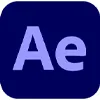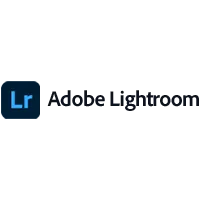Adobe Lightroom Reviews
& Product DetailsWhat is Adobe Lightroom?
Adobe Lightroom is a versatile photo editing and management software designed for photographers of all skill levels. Unlike its more advanced counterpart, Lightroom Classic, Adobe Lightroom offers a cloud-based solution that enables users to edit, organize, and share their photos from any device. The software provides a user-friendly interface with powerful editing tools that allow users to adjust exposure, color, and composition with ease. It also includes preset filters and AI-powered features to help users achieve professional-quality edits quickly.
One of Lightroom’s key benefits is its seamless integration across devices, allowing users to access their photos and edits from desktops, tablets, and smartphones. This flexibility makes it an ideal tool for photographers who need to work on the go or collaborate with others. Additionally, Lightroom’s organizational tools enable users to efficiently manage large photo libraries, with options to add keywords, create albums, and sort images by metadata.
Adobe Lightroom is perfect for photographers who want a streamlined editing experience combined with the convenience of cloud storage. Whether you’re enhancing vacation photos, editing professional shoots, or sharing images on social media, Lightroom provides the tools and flexibility needed to create stunning visual content anywhere, anytime.
Best For
- StartUps
- Freelancers
- Small Business
- Medium Business
- Large Enterprise
- Non-profit Organization
- Personal
- Cloud, SaaS, Web-Based
- Mobile - Android
- Mobile - iPhone
- Mobile - iPad
- Desktop - Mac
- Desktop - Windows
- Desktop - Linux
- Desktop - Chromebook
- On-Premise - Windows
- On-Premise - Linux
-
Company Name
Adobe
-
Located In
United States
-
Website
adobe.com
Starting from:
$9.99 /month
Pricing Model: Subscription
- Free Trial
- Free Version
Pricing Details:
You can purchase Adobe Lightroom with an annual plan starting at $9.99/mo or $119.88/yr. Get the Lightroom plan with 1TB of storage, or purchase a Photography plan with Lightroom and Photoshop (20GB or 1TB).
- Collaboration Tools
- Content Import/Export
- Blur
- Content Sharing
- Crop
- Drag & Drop
- Enhance
- File Management
- Orientation
- Image Library
- Lighting
- Pre-built Templates
- Real Time Editing
- Search/Filter
- Watermarking
-
Cloud-Based Flexibility
One of the most significant advantages of Adobe Lightroom is its cloud-based nature. Users can access their entire photo library from any device, which is particularly useful for photographers who work across multiple platforms or need to edit on the go.
-
User-Friendly Interface
The interface of Adobe Lightroom is praised for being clean and intuitive, especially for users who might find Lightroom Classic overwhelming. The simplified layout makes it easier for beginners to start editing without feeling intimidated by too many options.
-
Cross-Device Syncing
Lightroom’s ability to sync edits and photos across devices is a major plus. Changes made on one device are automatically updated on others, which is convenient for photographers who need to transition seamlessly between their desktop, tablet, and smartphone.
-
Presets and Profiles
The availability of a wide range of presets and profiles is highly appreciated by users. These tools allow for quick edits and help users achieve a consistent look across their photos with minimal effort.
-
Non-Destructive Editing
Similar to Lightroom Classic, Lightroom also offers non-destructive editing, meaning all changes can be reversed, and the original image remains intact. This feature is crucial for photographers who want to experiment with different looks without risking the loss of the original file.
-
Limited Advanced Editing Features
Compared to Lightroom Classic, Adobe Lightroom offers fewer advanced editing tools. Users who require more detailed editing options, such as precise local adjustments or advanced retouching, may find the software lacking.
-
Dependency on Internet Connection
Since Lightroom is cloud-based, it heavily relies on an internet connection for syncing and accessing files. Users in areas with poor connectivity may experience delays or difficulty accessing their work.
-
Storage Costs
The cost of additional cloud storage is a concern for many users. While the initial storage offered with the subscription might suffice for casual users, professionals with large libraries often find themselves needing to purchase more storage, which adds to the overall cost.
-
Slower Performance on Older Devices
Some users report that Lightroom can be slow on older or less powerful devices. This is particularly evident when working with large files or performing complex edits, leading to a less smooth experience.
-
Limited Offline Capabilities
Although Lightroom offers some offline functionality, it is limited compared to what’s available when connected to the cloud. Users who need full access to their tools and library without internet may find these limitations frustrating.
Disclaimer
Here at Tekpon's Global Buzz, we blend AI smarts with a human touch to offer a snapshot of user reviews from the web. While we carefully craft these summaries, please remember they reflect diverse user views and experiences, not Tekpon’s own opinions.
-

Adobe After Effects
Video Editing Software
-

Adobe Illustrator
Graphic Design Software
-

Adobe Premiere Pro
Video Editing Software
Looking to buy Adobe Lightroom for your business?
Tekpon’s procurement team can help you negotiate a better deal, or suggest more cost-effective alternatives.
Save time and money—starting at just $3,000/year.
Request a Custom OfferIncludes expert support and direct vendor negotiation.
Tell us your opinion about Adobe Lightroom and help others.
